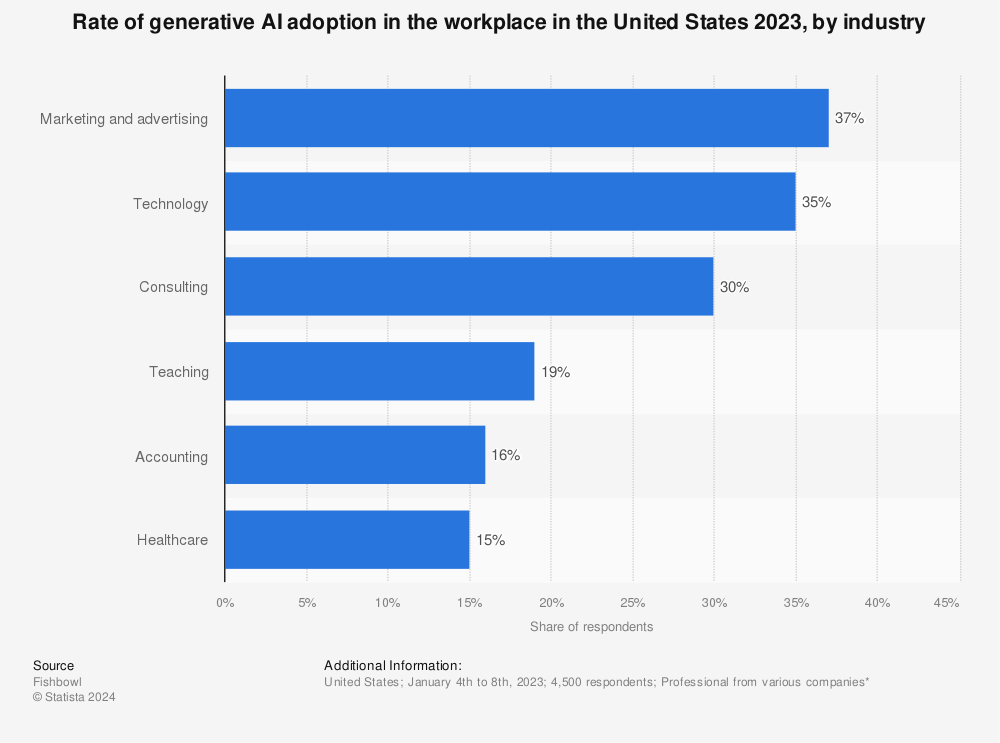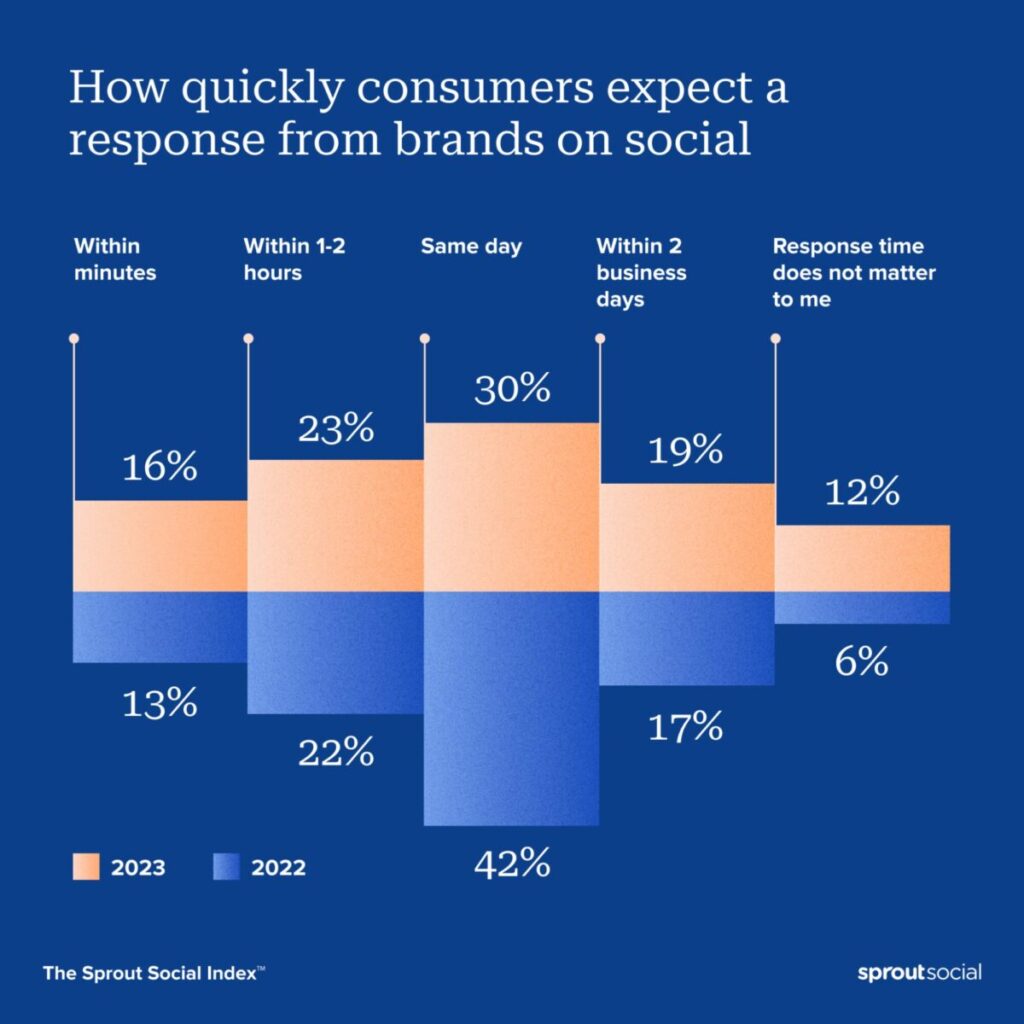Social media has gone through some interesting changes in recent years. We all saw Twitter’s takeover by Elon Musk, changing the platform’s name to X and introducing new features.
Some new platforms also emerged, with Threads, Mastodon, and BlueSky being quite prominent. Reddit has become an important source of information owing to the declining quality and relevance of Google search results.
Generative AI also got better, and AI-generated content started to become more popular.
Speaking of popularity, influencers have become the new celebrities in the digital space, many of them earning in millions for their sponsored content.
But what does the future hold for social media marketing? How will these developments advance in the coming years?
Let’s discuss the future of social media marketing in the light of expert predictions and insights.
The Future of Social Media Marketing (+Expert Predictions):
Which Trends Will Drive the Future of Social Media Marketing?
There’s a lot to be said about the emerging trends and their impact on social media marketing. While new technologies and trends emerge every day, some are more likely to shape the future of social media marketing.
Here’s a look at them.
Rise of Artificial Intelligence
Since ChatGPT introduced most of the world to the wonders of AI-generated content, we’ll start with it. Ever since its release, many companies have turned to ChatGPT for research and content creation.
Social media marketers are among these entities.
From writing social media hashtags to generating post ideas, ChatGPT can do a lot. In fact, ChatGPT has saved 24% of companies $50,000 to $75,000 in their work processes, whereas 11% of the businesses saved over $100,000 by using the tool.

Social media marketers will continue to use ChatGPT and similar platforms for their day-to-day tasks. In 2023, 58% of employees were using ChatGPT for copywriting and content creation. Other use cases included research, task list generation, and creating meeting summaries.

According to Statista, the marketing and advertising sector has the highest rate of AI adoption. About 37% of the respondents in these fields are already using AI, compared to 35% in technology, 30% in consulting, and 19% in teaching.

Besides content generation, social media marketers will also use AI for data analytics, predictive modeling, creating personalized customer experiences, and customer support.
According to John Hall, the co-founder of Calendar, forecasts,
“AI won’t replace information gathering and analysis entirely. But it will certainly simplify evaluating the data and analytics behind certain issues. Machine learning models and algorithms will increase the rate at which professionals can examine data.“
So, there will be many applications of AI in the social media marketing industry.
Reliance on Influencer Marketing
Another trend that will be carried on in the future is partnering with influencers. Our influencer marketing benchmark report found that 37.6% of brands work with 0 to 10 influencers, while 19% work with 10 to 50 influencers.

However, there will be a difference in the types of influencers brands work with.
There was a time when influencer marketing meant working with the likes of Kylie Jenner and James Charles who have millions of followers across different social media platforms. The idea was that since these influencers have a high number of followers, their reach and engagement would lead to better conversions for the brand.
While this may still hold true for some influencers, the general trend is that the larger the following, the less engaged they are. Macro-influencers also have a less specific audience, making it difficult for brands to target a specific niche or demographic.
This is where micro-influencers come in. Even nano-influencers.
Neal Schaffer, named by Forbes in its Top 50 Social Media Power Influencer twice, says,
“Perhaps the biggest advantage of using influencers is that you have the opportunity to choose people who are part of your target market, or who appeal to your target market.”
Going forward, that’s what more and more brands will do. Instead of working with macro-influencers and hoping to find their audience within their massive follower base, brands will work with influencers who have the same target audience as them.
Think a household cleaning brand partnering with a “mommy blogger”, or an athleisure brand working with a fitness influencer.
Our report found that 21.1% of brands use content type as a primary factor for influencer evaluation in 2024, compared to 19% in 2023. On the other hand, the focus on views, reach, and impressions has decreased from 35% of brands using it in 2023 to 32.9% in 2024.

So, there’s definitely a shift there.
Part of the reason working with influencers is so effective is that it taps into storytelling, which is another trend ruling social media marketing.
Samira Farivar, an Assistant Professor of Information Systems at the Sprott School of Business, puts it well when she says,
“Storytelling is so influential because it goes back to why people follow influencers — they find their lives interesting and want to know more. Personal connection is very important.”
The blend of influencer marketing and storytelling will do the trick for brands.
Shift to New Platforms
Social media marketing will also experience a shift in terms of platforms used.
As the number of social media users continues to grow, so does the competition for attention on each platform. Brands will have to explore new and emerging platforms to reach their target audiences.
TikTok’s success is already proving this. The short-form video platform saw a spike in usage during the pandemic and has maintained its popularity even as life begins to return to normal.
BeReal, a photo-sharing platform introduced in 2022, also became pretty popular pretty quickly. Both platforms are predominantly popular among the younger generation.
While 62% of the US teens use TikTok, 34% are also on BeReal.

Source: emarketer.com
Meta’s Threads is another contender in this space. The X-like social media platform got 2 million followers in just two hours after its launch.

Source: demandsage.com
The next day, Mark Zuckerberg posted a thread that the platform now has 30 million sign-ups.
As layoffs started on X (Twitter at the time), the shift toward Mastodon, a similar Twitter-like user interface, caused a stir. The number of new daily users increased as soon as Musk took over X.
Something big is happening in Mastodon over the weekend. Here is my graph, updated. Right now Mastodon is growing ~3 times faster than Twitter. https://t.co/Mpw798HET7 pic.twitter.com/DREDiUfaK9
— Esteban Moro (@estebanmoro) November 6, 2022
It seems like brands are eager to try new platforms as the previous ones become more saturated and algorithmically complex. The same wave will continue as new platforms surface.
Expert Predictions on the Future of Social Media Marketing
Experts have a lot of takes on how the social media marketing landscape will unfold. Here’s a closer look at what they have to say.
Sustainable Relationship Building Will Help Brands Thrive
“I think the key here is to remember the “social” part of social media. You don’t need to think about “engagement” in an overly mathematical or strategic way – just talk to people!”
It’s no longer about posting content and then measuring analytics. You have to be actively engaging with your followers and building genuine relationships.
Brands as big as KitKat are tapping into live streams to show their audiences that they’re accessible entities and not just big corporations existing behind phone screens.
KitKat Chocolatory Australia held a Facebook livestream to urge shoppers to purchase the chocolates by messaging the company through Facebook Messenger. The live stream generated nearly 30% of the company’s annual sales in Australia and resulted in a 23-point increase in KitKat’s brand awareness in populations aged 35 to 44.
“If you haven’t shifted your social strategy lately, you’re doing it wrong. For most of us, it’s not a traffic accelerator; it’s a relationship builder.”
Businesses will have to find new ways to build relationships with their audience, whether it be through live streams, conversational messaging, or personalized content.
Lay’s does relationship marketing quite well. The company’s Do Us a Flavor campaign invited customers to submit their own flavor ideas for a chance to win $1 million.

Source: prnewswire.com
Zappos Wellness Wednesday video series is another good example. The company created a YouTube playlist of videos featuring popular figures and runners, providing tips related to running and wellness.
Carolyn MacLeod, the Senior Manager at PBS Kids, also says,
“I think we’ll see more of an emphasis on conversation and direct engagement with our audiences. Audiences and fans are looking for the feeling of engaging with a real person with interests and opinions.”
With AI in the picture, the emphasis on direct human engagement will only increase. Don’t let AI do it all.
The human element is non-negotiable when it comes to relationship marketing.
Social Media-Based Customer Service Will Take Center Stage
Heidi K, a financial services expert, says,
“I’ve noticed customers using social media increasingly for customer service. We currently have one person who oversees our social media, and more of their time is being used to handle customer service issues vs. content creation and strategy.”
Moving forward, businesses will need to prioritize their social media customer service efforts. You need a customer support team that is equipped to handle inquiries and complaints on social media.
The Sprout Social Index found that 76% of customers appreciate businesses prioritizing customer support.
People are using social media to ask all kinds of questions or just voice their concerns. Zoila Streich, the co-founder of Independent Fashion Bloggers, says,
“About 70% of my customers reached out to me through social media channels, the other 30% by email. Most questions are about product availability and payment methods, but a few are feedback about the products or the buying process.”
Take UPS as an example. Their customers use X to ask for updates on packages and file complaints.
For example, this customer wanted to know how they could change their delivery options on the platform.
@UPS hi it says my address is wrong and the package couldn’t be delivered but im trying to change it and i can’t. what am i supposed to do ? pic.twitter.com/8TZ5Fs26kS
— . (@onlyheretovent9) May 2, 2024
Another customer filed a complaint about a UPS driver who threw the package at their door camera.
The key is to have a team that specifically manages all these customer support interactions. Sprout Social’s research found that 30% of customers want brands to respond on the same day, while 23% expect a response in 1 to 2 hours.

Source: sproutsocial.com
It’s evident that customers like to do business with brands that respond to their queries on social media. In a survey, 51% of respondents said that they are very likely to make repeat purchases from a brand that responds to them on social media, while 41% said they are “somewhat likely” to do so.
So, providing customer service through social media will not only help brands become more customer-centric but also increase advocacy and customer retention.
Personalization Will Be Key For Social Media Marketing
It’s about time brands start treating their customers as individual human beings rather than just names on their mailing lists. Personalization is bound to be integral to all marketing campaigns, including social media marketing.
Stephanie Frasco, social media strategist at Convert with Content, says,
”Personalization is key. The more personal you can get and the better you know your audience and customers, the more success you will have.”
In social media marketing, personalization could entail addressing a customer by their name when responding to their query or comment, sending them customized offers based on their past purchases, giving them shout-outs, and even creating content that speaks directly to them.
Bizim Muftak, a Turkish food brand, is a notable example of this. The brand worked with YW Istanbul, a creative and media agency that used customer data to find different groups within the brand’s target audience.

Source: ywistanbul.com
Then, they recruited chefs to create recipes that use the brand’s products as ingredients. The company then created a media plan with posts specific to each persona group.
These posts were published on Instagram and Facebook. The company’s strategic approach resulted in 2.5 million page interactions. Unique profile views also increased to 19k from a mere 955.
There was also a 7,616% increase in monthly post interactions.

Source: gwi.com
Social media personalization will no longer be a manual task. Rather, brands will use AI to personalize interactions. AI tools, particular those for audience insights and analytics, will be commonplace.
Nearly 80% of business leaders say that when they personalize interactions, customers spend more time shopping.

Source: statista.com
The same is reflected in customers’ views, too. In a survey, 64% of customers said they expect personalization as their spending increases, while 73% said the advancements in technology make them anticipate tailored experiences from businesses.
Personalization will also be imperative for its retention potential. In a Segment survey, 56% of customers said they will become repeat customers if they have a personalized experience.

Source: segment.com
Keeping this in mind, businesses will have to amp up their social media personalization efforts. Instead of targeting your audience as a whole, try to cater to their individual needs.
Segmentation can be helpful in this regard. Create different segments for your target audience based on factors like demographics and interests. Then, personalize your content.
For example, if you have a segment of young professionals interested in financial planning, share personalized posts about making smart investments or budgeting tips.
Similarly, create retirement-related content for an older audience segment. Every segment in your follower list should feel seen and represented.
Instagram and Snapchat Will be the Platforms of Choice
Many people think that TikTok is the new Instagram. While that’s true to some extent, brands should not sleep on the potential of Snapchat in the future.
Many experts predict that Snapchat will gain momentum in the coming years as it has a strong foothold on the young population.
Priya Florence Shah, the CEO of BlogBrandz, says,
”Visual media networks, like Instagram and Snapchat, are growing very fast, especially with millennials, and I think they will continue to grow in importance.”
Similarly, Nathan Chan, the CEO of FoundrMag, mentions adding Snapchat to his company’s social media strategy. He says,
”We got a strong focus on Instagram that seems to be where a lot of our audience spends their time. However, we are going to focus more on Pinterest and Snapchat as well.”
A look at Snapchat’s growth trajectory shows that the platform’s user base has increased consistently since its release. With over 400 million daily active users, the platform is used by many brands for social media marketing.

Bumble, the dating app, uses Snapchat to interact with its customers. The brand shares real-life relationship stories and tips and tricks on the platform. Bumble has also created Snapchat Lenses for its followers to use.

Source: snapchat.com
Since Snapchat is such a candid platform, the engagement from the brand’s target audience is quite high.
SHEIN, a fast-fashion brand, also uses Snapchat to run ads and showcase its new products to customers. The brand once ran a Snap Ads campaign targeted to 100+ different segments based on user interests specific to Snapchat. The campaign was quite a success.

SHEIN also uses the platform for influencer marketing.
As for Instagram, brands should focus on Reels since Meta is pushing it as the next big thing. Besides video content, influencer campaigns are also a hit on the platform.
Influencer Marketing and Social Media Ads Will Go Hand in Hand
Amit Panchal, the co-founder of Blood Monk, says,
”The Future of Social Media Marketing will rely extensively on influencers and ads.”
He further explains,
”While organic reach is reduced day by day, brands want results quickly. So… in the days to come marketers would have to completely depend on pay-to-play.”
He’s not the only one with this view.
Brian Carter, a consultant and best-selling author, says,
”Marketers who avoid ads will always lack the power, targeting ability, instant results, and swiss-army knife full of options that advertisers have.”
He recommends that you should ask three questions before deciding if ads are worth running on a social media platform. First, do your prospects use that particular social media platform? Second, does the platform have ads, and third are these ads effective?
If the answer to these questions is yes, you should invest in ads on that social media platform.
While Instagram and LinkedIn ads are also considered effective, many experts note that advertising on Facebook is much more impactful.
Priya Florence Shah says,
”Blogging and Facebook ads are my favorite marketing strategies because they give such a great ROI.”
Similarly, Carter also believes Facebook ads to be better than their LinkedIn counterparts.
We’ve already touched on influencer marketing before. Nano and micro-influencers will be preferred in the future.
Our report shows that 44% of brands prefer using nano-influencers, an increase from 39% in 2023. Only 12.9% of brands use mega-influencers or celebrities for their marketing campaigns.

These influencers offer better value for money due to their engaged followers. But you must choose an influencer who is a good fit for your brand and target audience.
Conclusion
All these expert predictions and trends point to one thing: the social media landscape is expected to look quite different from how it did 10 years ago.
Brands that evolve with time and take up new strategies are more likely to succeed in the market. Those who don’t will miss out on the rewards of social media marketing.
More importantly, social media will no longer be about selling. Customers are increasingly wary about AI use and data privacy now.
They will only be interested in brands that engage with them and offer personalized experiences rather than just pushing sales.


